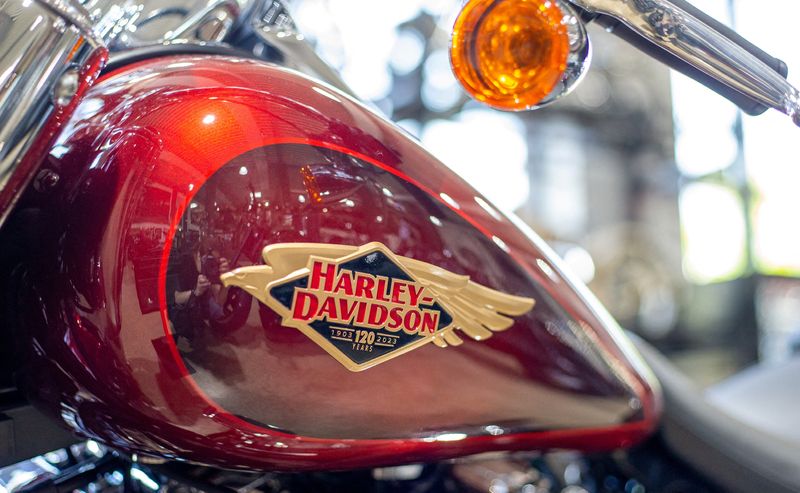When it comes to iconic motorcycle manufacturers, few names carry as much weight as Harley Davidson Frame Types. Known for their rumbling engines, classic styling, and unmatched legacy, Harley-Davidson motorcycles are more than just bikes —they’re symbols of freedom, rebellion, and American craftsmanship.
One of the most crucial components that define a Harley Davidson Frame Types ride quality, performance, and aesthetics is the frame. While often overlooked by casual riders, the frame forms the backbone of the motorcycle. It supports the engine, determines the bike’s stance, and heavily influences handling. Over the decades, Harley-Davidson has developed a variety of frame types to cater to different riding styles, mechanical needs, and design philosophies.
This article explores the major Harley Davidson Frame Types, how they differ, and what makes each one unique.
1. Hardtail Frame
Overview:
The hardtail frame is the most traditional and stripped-down version in Harley Davidson Frame Types lineup. It has no rear suspension, meaning the rear wheel is mounted directly to the frame.
Characteristics:
- No rear shocks or swingarm.
- Very minimalistic and clean look.
- Extremely rigid ride.
Pros:
- Classic old-school chopper aesthetic.
- Lightweight due to fewer components.
- Easier to customize.
Cons:
- Rough ride, especially on uneven roads.
- More stress on the rider’s body and bike components.
Common Uses:
- Popular among custom builders and chopper enthusiasts.
- Seen often in vintage restorations and 1940s–1960s inspired builds.
2. Softail Frame
Overview:
Introduced in the early 1980s, the Softail frame cleverly hides its rear suspension. It gives the illusion of a hardtail but includes shock absorbers mounted horizontally under the transmission.
Characteristics:
- Hidden rear shocks.
- Combines classic looks with modern comfort.
- Used in many Harley Davidson Frame Types models like the Heritage Classic, Fat Boy, and Softail Standard.
Pros:
- Smooth ride with vintage styling.
- Maintains the hardtail silhouette without the discomfort.
- Good for longer rides and cruising.
Cons:
- Not as sporty or nimble as some newer frame types.
- Limited customization compared to a full hardtail or touring frame.
Common Uses:
- Ideal for cruisers and everyday riders who want comfort and style.
3. Dyna Fram
Overview:
The Dyna frame was Harley Davidson Frame Types go-to for performance cruisers from 1991 to 2017. It features twin rear shocks mounted externally, along with a rubber-mounted engine to reduce vibration.
Characteristics:
- Twin shocks.
- More performance-oriented geometry than the Softail.
- Offers a balance between comfort and sportiness.
Pros:
- Great for riders who want more handling response.
- More rigid than Softail, less vibration than a rigid mount.
- Easier to customize due to exposed shock mounts.
Cons:
- Heavier than some modern options.
- No longer in production as of 2018.
Common Uses:
- Loved by performance-oriented Harley riders.
- Favored in club-style builds and stunt riding circles.
4. Touring Frame
Overview:
Used on Harley Davidson frame types, baggers, and long-distance touring bikes, the Touring frame is built for stability, comfort, and cargo. It’s the largest and most advanced frame in Harley’s arsenal.
Characteristics:
- Large, heavy-duty design.
- Fixed fairings on some models (like the Road Glide), fork-mounted on others (like the Street Glide).
- Designed to support saddlebags, large fuel tanks, and infotainment systems.
Pros:
- Ultimate comfort for long rides.
- Excellent highway stability.
- Can carry passengers and gear with ease.
Cons:
- Heavy and not ideal for city riding.
- Expensive.
Common Uses:
- Perfect for cross-country touring, two-up riding, and motorcycle rallies.
5. Sportster Frame
Overview:
The Sportster frame has existed since 1957 and is known for its narrow, compact build. Originally a response to British imports, the Sportster offered a lighter, more agile Harley Davidson Frame Types.
Characteristics:
- Smaller and more maneuverable than big twins.
- Usually features a solid-mounted engine in older models; newer ones use rubber mounts.
- Used in both beginner and intermediate bikes.
Pros:
- Lightweight and nimble.
- Great for urban riding.
- Affordable entry into Harley ownership.
Cons:
- Limited two-up and touring comfort.
- Smaller gas tank and less power than big twins.
Common Uses:
- Excellent for beginners, commuters, and custom café racers.
6. Revolution Frame (V-Rod)
Overview:
The Revolution frame was designed specifically for the V-Rod, Harley’s venture into muscle bike territory with a Porsche-developed engine. This frame was built to handle high RPMs and horsepower.
Characteristics:
- Hydroformed frame construction.
- Designed to cradle the liquid-cooled Revolution engine.
- Sportier rake and geometry.
Pros:
- Handles high performance and speed.
- Modern, aggressive styling.
- Uniquely engineered for performance riding.
Cons:
- Departed from traditional Harley aesthetics.
- V-Rod series was discontinued in 2017.
- Limited aftermarket support.
Common Uses:
- Built for drag racing, performance cruising, and urban muscle riding.
7. Street Frame
Overview:
Launched with the Street 500 and Street 750, this frame was part of Harley’s attempt to appeal to a younger, global market. The frame was lightweight and designed for agility.
Characteristics:
- Compact, liquid-cooled engine cradle.
- Low seat height for accessibility.
- Designed for city riding and new riders.
Pros:
- Affordable and light.
- Easy to handle for new riders.
- Good gas mileage and modern styling.
Cons:
- Lacked traditional Harley feel.
- Limited power for experienced riders.
- Discontinued in many markets.
Common Uses:
- Entry-level riders, urban commuters, and training schools.
Frame Evolution and Material Trends
While the basic architecture has stayed somewhat consistent, frame materials and manufacturing techniques have evolved:
- Steel Tubing: Most traditional Harley frames are made of tubular steel, prized for durability.
- Hydroformed Frames: Used in the V-Rod and some newer models, offering precision and strength with less welding.
- Cast Aluminum Components: In newer touring frames, aluminum is used in subframes to reduce weight.
Harley Davidson Frame Types continual innovation ensures that riders get the perfect balance of form, function, and iconic styling.
Conclusion
From the rugged hardtail to the sleek Softail, the performance-minded Dyna, and the long-haul-ready Touring frame, Harley Davidson Frame Types has developed a diverse range of frame types to cater to every kind of rider. Whether you’re chasing the nostalgia of the open road or customizing your dream chopper, the frame beneath your Harley defines more than just structure — it defines attitude.
Understanding Harley Davidson Frame Types isn’t just for gearheads or mechanics; it’s for anyone who appreciates the ride, the culture, and the rich legacy of one of America’s most legendary motorcycle manufacturers.




